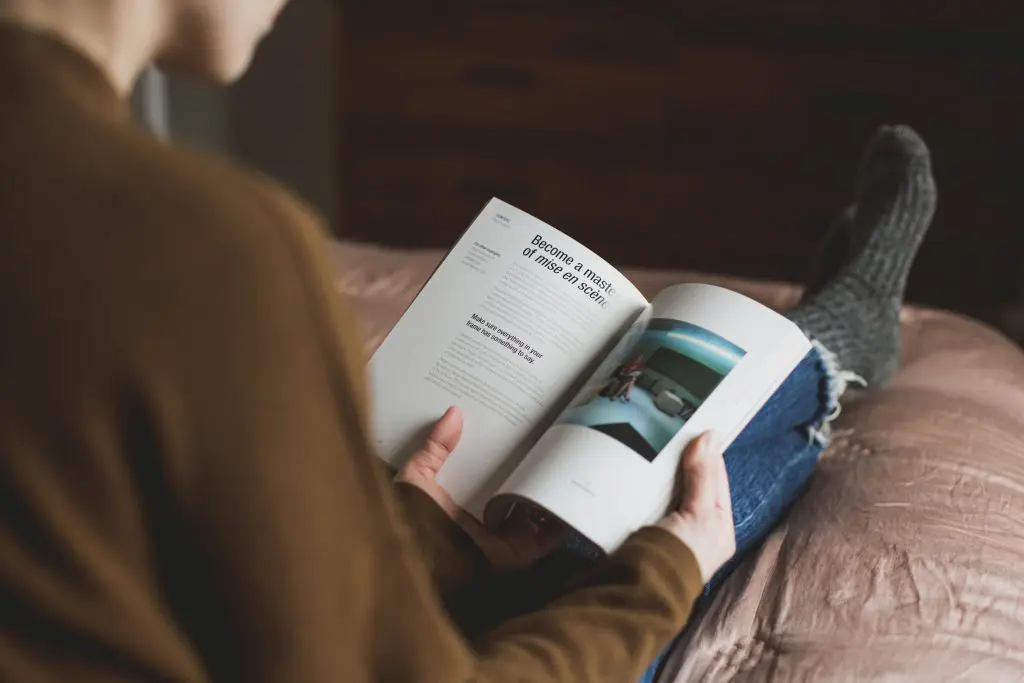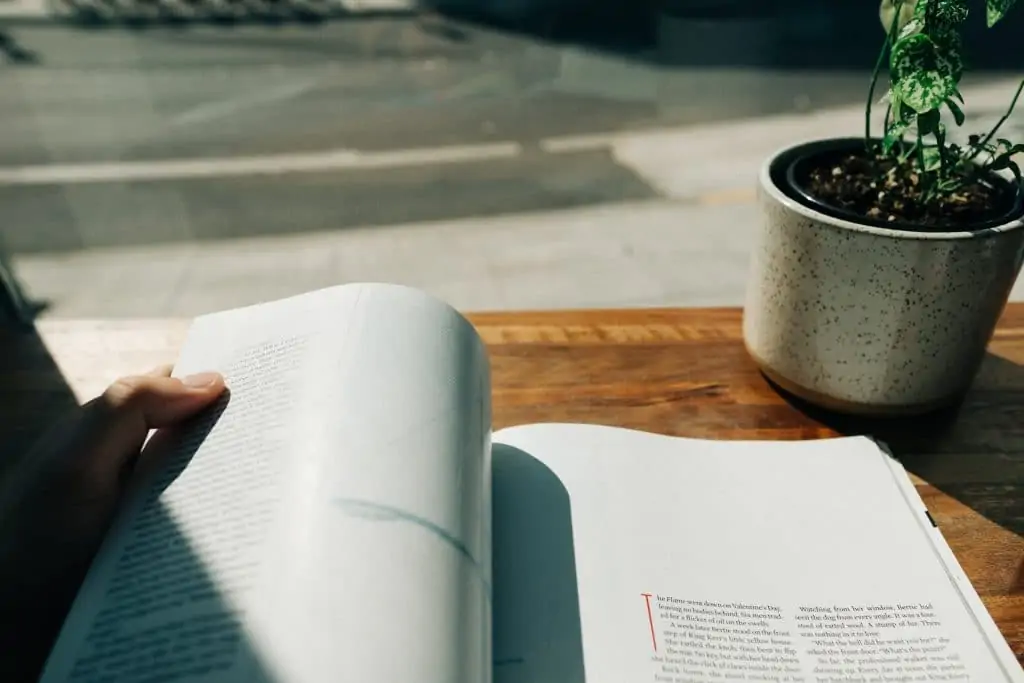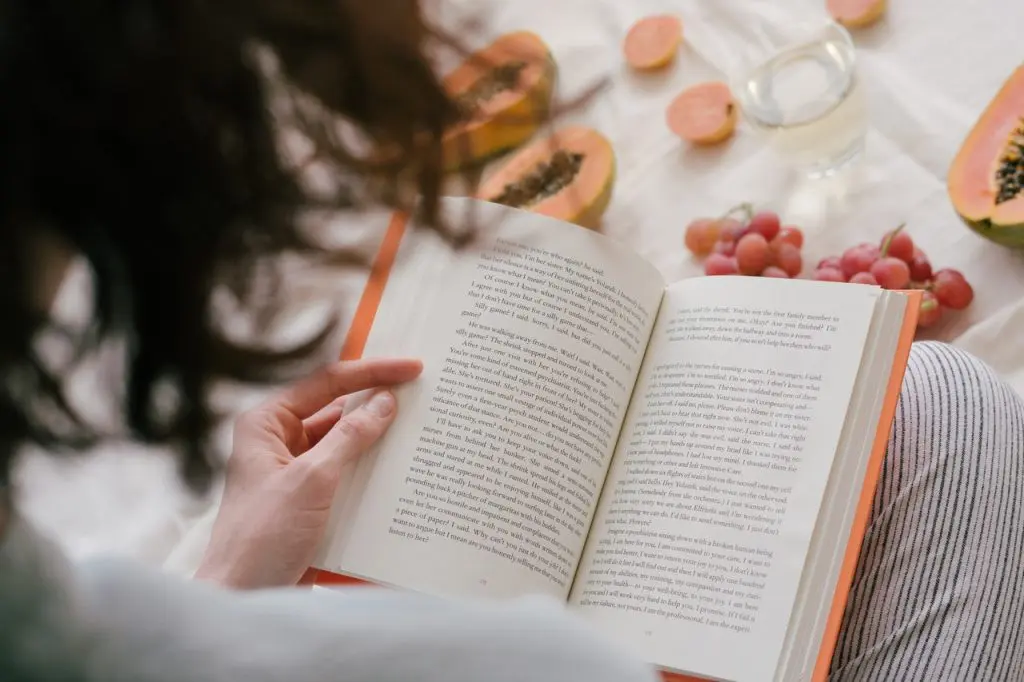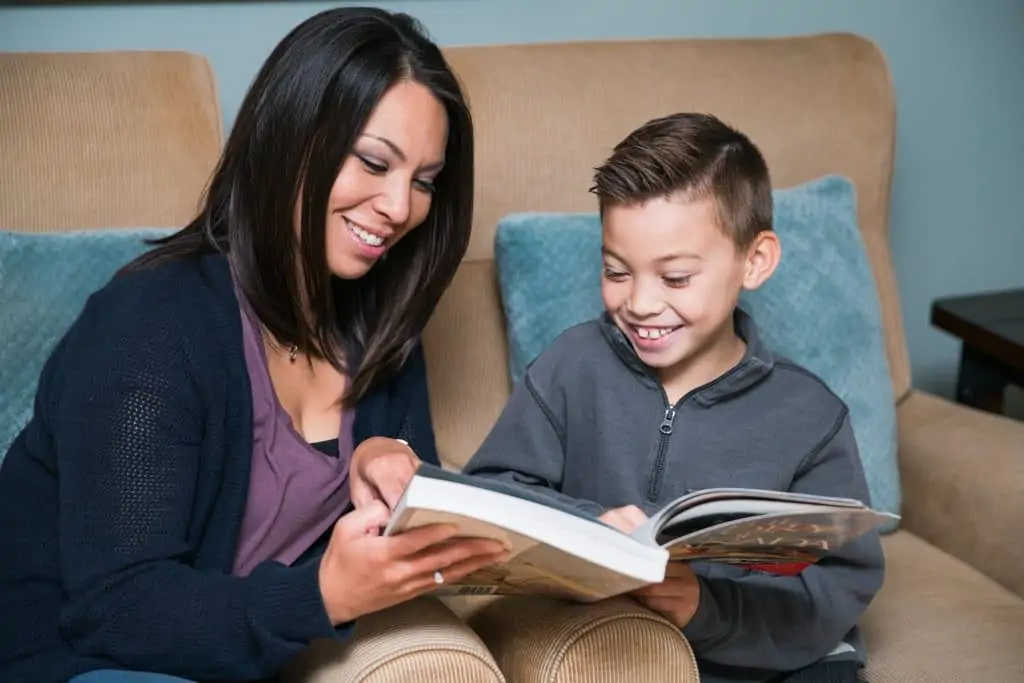Are you looking for a productive way to pass the time? Maybe ‘read more’ always scores a place on your New Year’s resolutions, but developing a reading habit is still a struggle. You know reading is fun, but there just never seems to be enough time… never fear! We’re here to provide you with a few guidelines and a load of great tips to incorporate reading into your everyday life. Here’s an in-depth guide on how to make reading a habit.
Why is Reading Important?
Since you’re here, you probably already think that reading is important. Otherwise you wouldn’t be trying to increase your reading, right? But let’s examine a few benefits of reading — our general cultural idea that reading is good hasn’t come about for nothing.
The most important? Reading is fun.
Not fun in the ‘look at a how few hours I can survive on’ sense in which studying is fun; not in the soft thrill of learning after hours of homework-related suffering. Just straight-out, flying on dragons and flirting with outlaws fun. (Or, if you tend toward a classier style, thirty pages of describing a Russian gulag fun. That’s fun too. Old Russian writers are witty).
We’ll go over some great tips on how to make reading fun later on.
Other reading benefits:
Reading broadens your horizons: it gives you a taste of places you have never been to, cultures that no longer exist, worlds that never were. Some people call reading fiction ‘escapism,’ but what is wrong with diving in to a new perspective, learning a new way of thought? Reading gives you insight in to different perspectives — you can learn from the stories of people you would likely never get to meet, and understand where people in all levels of society are coming from.
Even fiction — even sappy romances and thrillers — have their merits. Each to their choosing; personally I love genre fiction. Stories are our way of interpreting the world, telling ourselves and each other what we believe. Maybe that young adult (YA) dystopia isn’t all that original — but the fact of a ‘dystopian’ fallen future allows us to examine the values of our current society, and to think about what we hope falls and what we wish will stand.
As for nonfiction, the benefits are nearly endless, and quite often very straightforward. The topics covered in nonfiction books are practically endless. Jared Diamond’s Guns, Germs and Steel not only contains great historical information, but leads the reader to thoroughly understand why the world’s cultures have developed at different speeds. Sy Montgomery’s Soul of the Octopus discusses animal intelligence and has lots of great octopus anecdotes. The list goes on and on…
What is a Reading Habit?
So what is a reading habit, really?
A reading habit is just like any other habit: it’s something you do regularly, every day or at least every other day. Most readers have a certain time they read, in addition to reading whenever there are a few spare minutes. For example, some people always read over breakfast. Others spend a half hour with a book before bed.
How you want to cultivate your reading habit is up to you. If you’re a person who usually parties past midnight and stumbles home somewhat less than sober, pledging to read for an hour before bed is probably not a good bet. Maybe try to crack open a book in the morning, or during your lunch break, or when you get home from work. A general guideline is to look at your personal schedule: where do you have gaps of free time? Is there a scheduled time which you usually pass on your phone, like a lunch break, or a time when you crash and watch television? Could you switch that tech for a few good, old-fashioned pages (or a kindle)?
Of course, it’s usually not as simple as saying “right, I’m disciplined now,” promptly ditching Keeping Up With the Kardashians, and polishing off War and Peace instead. Training yourself to read — and to enjoy reading — takes time. Let’s look at some ways people incorporate reading into their lives, and some tips at how you can do the same.
What are Examples of Good Reading Habits?
The quintessential reader always has a book in hand, and in any situation where a few minutes are free. These crop up everywhere — waiting in line at a grocery store; waiting for appointments, or for your coffee to be made; the three minutes it takes to microwave TV dinners; standing outside a restroom, waiting for a friend. Maybe you’ll only read a page or two each time, but at the end of the day, that’s ten pages read, which is another book finished each month.
Another easy reading habit is actually to read before bed. Science shows that looking at a screen right before bed makes it more difficult to go to sleep than, say, looking at a page. Reading allows your mind to relax and sink in to another mode rather than dwell on the events of the day, which can send you right to sleep… just remember to bookmark your place.
Finally, many readers schedule out a certain time to read during their day, often in transitions from one mode of life to another. Reading is a great way to unwind after work, even if it’s just for a few minutes. Reading first thing in the morning can put an interesting story or array of characters in your head, for you to daydream about in the dull moments of your day.
Bear in mind that there are lots of types of reading habits, so don’t feel as though you need to follow all of these. Pick whichever habits you would like to cultivate in your life as you please.
5 Ways to Make Reading Fun
Keep a list of books you have read.
Nothing is more satisfying than looking back on what you’ve achieved! There are endless ways to do this — you can make a list on your phone or email, or use sites such as Goodreads. Pen and paper are great too, and that way you can write the titles in pretty handwriting.
Add whichever details make you happy — genre, page count, author, date finished or date begun. Personally, I color-code by genre, which would probably be great for people who read classic or classy books. I do not. My colors reveal me.
Find pleasing bookmarks.
There is a certain devil-may-care joy to using McDonalds receipts and other unholy scrap paper for bookmarks, but you can be encouraged to read, theoretically, by using interesting bookmarks. Some ideas:
Use the same nice-looking bookmark and write the title of every book you read with it on the back. (Gets better with age!)
Playing cards. (I once “read” through an entire deck, one card per book, in a year).
Notes written by friends or lovers.
Home-made bookmarks. (Create your own design!)
Read up on the author or background of your book.
This needn’t take long. A one-page author summary or introduction can make your understanding of a book much richer, particularly for books written in years past, or in locations you know little about. Looking up the basic history of a country your book is set in can give great depth — a Wikipedia article summary is usually all it takes.
For example, did you know that Victor Hugo was actually a witness to the June Rebellion of Les Miserables fame?
They also say that he once threw all his clothing out the window to force himself to stay home and write when he was behind on a deadline. Even great people procrastinate.
Read books you enjoy.
This is a bit of a no-brainer, but it deserves to be said. It is so tempting to give a certain genre or author you know you dislike a second chance — this back cover summary is great! The book is on sale! And the front cover was so well designed…
But there’s nothing more irritating than slogging through several hundred pages of writing you despise. If you hate it, it takes even longer to get through.
So do yourself a favor and think about which books — plots, authors, genres — you enjoy, and which ones you don’t. If you patently despise romance, easy fix: don’t read. If you choose books you like, you’ll always be excited to read them, and then it’s a win-win situation.
Read name-drop or popular books.
One great side effect of reading is being able to talk about books with people you know. You’d be surprised how many people have read and enjoyed the book you’re reading now! So, that said, there are two directions to take this…
Read classic books. At least one. A really big, long, noteworthy one. Then mention it constantly, especially past midnight at those parties you go to. This will show everyone that you’re intelligent and cultured, and maybe you can educate them about all the Russian gulags you’ve slogged through.
Or, y’know, just read popular books. That probably lends itself to more even-keeled conversation.
Popular books can be surprisingly great segways to deeper conversations, too. For example, I read Game of Thrones at fourteen, when I probably wouldn’t engage adult men in conversations about sex trafficking and what constitutes consent as opposed to rape had I not wanted to debate George R R Martin’s early treatment of Daenerys. See? Dark stuff.
Don’t like popular books? Sail your own boat, follow step 4, and read what the heck you like. No one’s judging, especially if you never read in public.
5 Reading Habit Hacks
Here are a few tips to help yourself develop the habits of a good reader.
Read to the end of the paragraph before putting a book down.
This is very helpful for being able to open up your book again without having to re-read parts, and is great for when you’ve only got a few minutes to read and don’t want to have to skim over what you’ve already read.
Read to the end of the chapter.
Authors plot chapters out quite purposely — most of the time. Sometimes this means every chapter will end on a cliffhanger, but more often than not, chapters are designed to have their own self-contained arc. It’s great to be able to start on a new arc when you open up a book. Also, you’re trying to train your brain to enjoy reading, and there’s a certain satisfaction to having finished a chapter — that’s a great success note to end on, so that you feel satisfied with your reading, rather than disappointed that you didn’t read further.
Also, reading to the end of a chapter is a great way to make yourself keep reading. You can check where the chapter ends, then tell yourself ‘just three more pages. I got this.’ You may have got this so much that you read one more chapter afterward… and one more again.
Find what atmosphere encourages reading.
Some people find it difficult to focus in noisy environments, and others struggle to read in dead silence. It varies by the person, so it can be great to find what works for you, then create that environment for yourself whenever possible.
For example, if you prefer to read in noisy settings, you can nip to a cafe so as to read amidst conversations. If you crave silence, create a reading nook in your bedroom. Some people read to heavy metal, and perhaps a larger number read to peaceful instrumentals.
Review to yourself what happened in your book.
When you spend a long time between reading sessions, your brain is liable to forget what you read, whether it’s half a well-crafted nonfiction argument or a plot full of robot alien invasions. So before you dive in to reading, check with yourself if you know what’s going on. Then review, either aloud or mentally, just who stabbed who, which robot alien is bedding which mad scientist, and so on and so forth, until you’re caught up.
Carry that book with you.
Not in your bag. In your hand.
You think I jest, but I do not. If there is a book in your hand and a phone in your pocket, it takes minimally more effort to pull out your phone than to open your book. Result? Either you come to terms with your technology addiction — no shame there, we’ve all got one — or you read more.
5 Reading Tactics and Strategies
Alrighty, you’re curled up in the back of your closet, ambient birdsong blasting on your phone. You’ve decided on a great love for classic literature, researched Charles Dickens and the Industrial Revolution, cut out a bookmark, and by golly, you’re going to read to the end of the chapter whether it takes ten minutes or an hour. What more can you do to develop great reading habits?
Here are a few more long-range reading tactics and strategies to guide you to a glorious addiction for ink and story.
First, remember that developing any habit takes time.
If you start with Charles Dickens, good for you! If you feel bored out of your mind with him in fifteen minutes’ time, that is normal — as authors go, Dickens is dense, and reading nineteenth-century styles takes concentration. It’s completely normal to feel bored or unfocused when you’re first cultivating your reading habits. The thing to do is keep practicing.
Don’t force yourself to read for an hour on the first go. Start with little chunks, five minutes or three pages, and slowly progress upward.
Also, it’s great to start with books you know you’ll like — which, for the majority of the population, were not written in the eighteen hundreds. You want something which excites you and makes you want to read more, so that you come back to reading eager to dive in.
Book monogamy, or book polygamy?
Maybe you and Dickens are spending some time apart. It’s not like he’ll ever know you spent a late, thrilling night with Stephen King.
There is, allegedly, debate on the internet as to whether it’s better to read one book at a time, or multiple books at once. Of course, no one can control you, so do whatever makes you happy and excited to read. For sake of argument, we’ll look the pros and cons of book monogamy and polygamy.
Book monogamy, or reading one book at a time, is great for keeping yourself aware of what is happening in whatever book you’re reading. You won’t get confused and cross over plots. You’ll also be more focused on that one book, which means you’ll be able to finish it faster — and finishing books is actually one of the best reading habit hacks, since finishing gives you a great boost of dopamine and satisfaction.
However, if you are a busy person, or you’re reading a long book, you might not want to read the same darn thing every day for two weeks. In that case, it may be to your benefit to read two or more books at once simply for sake of variety.
The second case for book polygamy.
(It is mighty raunchy to be a polygamist.)
Some people read nonfiction books for pleasure and actually find pleasure in doing so. The majority of people aspire to be like those people, but find nonfiction books intensely boring. A great way for this second class of people to add nonfiction to their reading list is to practice book polygamy — maybe you’ll read three fiction books in the time it takes to finish one nonfiction (which is better than most of us, really). The fiction gives you a break between your educational, informational treatises.
The same goes for long books of any genre, and classic books of any length — they take a lot of time and effort, so it’s easier to read other fiction alongside them.
Third and final case for book polygamy.
Say you are following all the reading hacks, and carry the book you’re reading around with you. That’s great, so long as it’s not Fifty Shades, one thousand pages and quite heavy, or about deep, dark, disturbing subject matter. Not a great time, right? Victor Frankl is fascinating to read, but likely a poor fit for waiting in line at a coffee shop.
The solution? Polygamy, of course. Keep your Holocaust memoirs and erotica at home, and read your side book out in public.
To-read lists
To-read lists are a great way to excite yourself to read more. Make a list of the books you would like to read in a year, or more realistically, the next ten years. This way when you finish a book, you can eagerly begin the next one!
Let’s add a quick caveat, though: as with any new habit, you want to set realistic goals. If you plan to read a hundred books in the next year, or twenty books in the next month, and then dramatically fail (as most of us would), you’ll probably feel dejected. If you somehow force yourself to read twenty books a month, there’s a high chance you’ll make reading into a chore rather than a pleasant pastime. Both of those outcomes are undesirable, so it’s best to give yourself manageable goals — set yourself up for success.
If you can read twenty books per month consistently, that’s impressive. Mention it at parties.
Bonus: visit libraries!
Libraries are a great way to access free books. You’re likely to find great reads, as libraries take care to stock up on modern bestsellers (although there tend to be long waitlists for books published in the last few months). You don’t have to worry about filling up your shelves, or spending copious amounts of money on books you may or may not like.
Best of all, library loans have due dates, which means you’ve got a limited time to read any given book. Deadlines, while inconvenient, are actually a great way to motivate ourselves, so read to hit the due date — you may finish faster than you would have otherwise!
Teachers: How to Develop Reading Habits in Students
Developing good reading habits in students should be easier than it is for adults — students have more time than adults, less access to phones and television, and great enthusiasm for stories. However, in this age of technology, it can be difficult to get students on board. Here are a few pointers for how to develop reading habits in students.
Free literacy time.
It’s incredibly important for students to see reading as fun, and the best way to do this is to allow students to pick their own books, then read for a set amount of time during the day. Having a set time to read, in which everyone must be silent and actually read, will encourage all students to read when they might not make time for reading of their own accord otherwise.
This is, of course, easier in elementary classrooms and situations in which one teacher schedules the majority of the day. However, even an hour-long class can fit ten minutes of reading in at the beginning or end of the period.
Book groups.
Reading a book as a class — that is, having each student read on their own, then going over what was read — can work to engage students who would otherwise struggle to understand a difficult book. Class discussions encourage students to talk to one another about what they are reading and draw out ideas.
Assigned reading.
Every student complains about it, but frankly, how many Shakespeares does the average person read outside of class? Tests and deadlines can compel students to read books they wouldn’t crack open alone.
Appeal to students’ darker halves.
Speaking of Shakespeare, that man was a brilliant writer, and he wrote brilliant sexual innuendos. Of course, many students are not strong or focused readers, and so may miss these centuries-old turns of phrase. Enlighten them, and see if doing so sparks their interest.
Free reading projects.
Allow students to choose what to read from a list of pre-approved books, then guide them through individual projects exploring some aspect of the book. This can go in any direction, with more or less complexity, depending on age group.
Wrapping Things Up: How to Make Reading a Habit
Have you been reading carefully? Cultivating a reading habit takes no more than a few minutes’ worth of reading every day, or every other day; whenever you have time. There are many tips and tricks to encourage yourself to read, such as writing to-read and have-read lists, making interesting bookmarks, and balancing your entanglements with any number of books. Ultimately, forming a reading habit simply comes down to consciously choosing to read more, in whatever capacity satisfies you.
Go forth and read!
If you found this helpful, you’ll love our other high school study tips.
You make also like these articles on the best reading books here and our ultimate guide to reading here.


















